Home>Articles>What Are The Potential Safety Hazards When Using A Ladder


Articles
What Are The Potential Safety Hazards When Using A Ladder
Modified: January 8, 2024
Find articles about ladder safety and the potential risks faced by workers when using a ladder in hazardous conditions.
(Many of the links in this article redirect to a specific reviewed product. Your purchase of these products through affiliate links helps to generate commission for Storables.com, at no extra cost. Learn more)
Introduction
When it comes to workplace safety, it is crucial to recognize and address potential hazards that workers may face. One such hazard that often goes unnoticed is the use of ladders in jobs where workers can be exposed to various risks. Ladders are a common tool used in many industries, ranging from construction and maintenance to painting and window cleaning. However, if not used properly or in an appropriate manner, ladders can pose significant dangers to workers.
The importance of safety cannot be overstated in any work environment. It is the responsibility of employers and workers alike to prioritize safety and take necessary precautions to prevent accidents and injuries. While ladders are essential for performing certain tasks at heights, they also introduce certain risks that need to be mitigated through proper training, education, and adherence to safety regulations.
In this article, we will explore the potential risks and hazards associated with using ladders in jobs where workers may be exposed. We will also discuss the safety measures and responsibilities of both employers and workers to ensure a safe working environment.
Key Takeaways:
- Prioritizing safety in jobs involving ladder use is crucial for employers and workers to prevent accidents, reduce injuries, and create a secure work environment, ultimately enhancing productivity and reputation.
- Comprehensive training, proper PPE, and well-defined emergency procedures are essential for ensuring the safety and well-being of workers using ladders, fostering a culture of teamwork and cooperation in the workplace.
Importance of Safety
Safety should always be the top priority in any workplace, regardless of the industry or job role. The use of ladders in jobs where workers may be exposed comes with inherent risks that must not be taken lightly. One small misstep or negligence can result in severe injuries or even fatalities.
By emphasizing safety, employers can create a work environment that promotes well-being, reduces accidents, and ultimately increases productivity. Here are a few reasons why safety is of utmost importance:
- Protecting Workers’ Lives and Health: The primary reason for prioritizing safety is to ensure the well-being and health of workers. Accidents related to ladder use can lead to serious injuries, such as fractures, sprains, strains, and even head or spinal cord injuries. By implementing proper safety measures, employers can significantly reduce the risk of such incidents and safeguard their workers’ lives.
- Reducing Costs: Workplace accidents can result in substantial financial burdens for both employers and workers. Medical expenses, compensation claims, and potential legal issues can have a significant impact on a company’s bottom line. Investing in safety measures, including proper ladder training and equipment, can help prevent accidents and minimize financial liabilities.
- Maintaining Productivity: When accidents occur, workers may need to take time off to recover or deal with the physical and emotional trauma. This leads to decreased productivity and potential delays in project completion. By prioritizing safety and minimizing accidents, employers can ensure a consistent workflow and maintain productivity levels.
- Enhancing Reputation: A company’s commitment to safety reflects its values and professionalism. By demonstrating a strong commitment to worker safety, employers can enhance their reputation among clients, employees, and stakeholders. This can lead to improved business opportunities, increased customer trust, and a positive working environment.
- Fulfilling Legal Obligations: Employers have a legal obligation to provide a safe and healthy work environment for their employees. Failure to do so can result in legal consequences, fines, or even closure of the business. By adhering to safety regulations and ensuring proper ladder use, employers can fulfill their legal duties and avoid legal complications.
Overall, the importance of safety in jobs where workers may be exposed to ladder-related hazards cannot be overstated. Employers must prioritize safety, provide proper training, and ensure compliance with safety regulations to create a secure and productive work environment.
Types of Ladders
There are various types of ladders available, each designed to serve specific purposes and cater to different working conditions. Understanding the different types of ladders can help employers and workers select the most appropriate one for their tasks, ensuring safety and efficiency. Here are some common types of ladders:
- Step Ladders: Step ladders are self-supporting and commonly used for tasks that require a stable and secure platform. They have a hinged design, allowing them to be opened in an ‘A’ shape, with steps on either side. Step ladders are ideal for tasks that do not require additional support, such as painting walls or accessing overhead storage.
- Straight Ladders: Straight ladders are the most basic type of ladder and consist of a single long section without any hinges or platforms. They are typically leaned against a wall or structure and require proper stabilization to prevent tipping. Straight ladders are suitable for tasks that require reaching elevated heights, such as construction work or roof repairs.
- Extension Ladders: Extension ladders are adjustable in length and consist of two or more sections that can be extended or collapsed as needed. They are commonly used when working at greater heights, such as reaching high roofs or accessing tall buildings. Extension ladders should be properly secured and stabilized to prevent accidents.
- Platform Ladders: Platform ladders feature a wide, stable platform at the top, providing a secure working area for workers. They often have handrails for added stability and are suitable for tasks that require longer working durations or involve carrying heavy tools or materials.
- Multi-Purpose Ladders: Multi-purpose ladders are versatile and can be adjusted to serve different functions. They can be used as step ladders, extension ladders, or even as scaffolding systems, depending on the configuration. Multi-purpose ladders are ideal for tasks that require flexibility and adaptability.
- Telescoping Ladders: Telescoping ladders are compact and highly portable, as they can be easily collapsed into a smaller size for storage and transportation. They feature an overlapping design that allows sections to slide into each other, extending or retracting the ladder as needed. Telescoping ladders are commonly used in small spaces or for on-the-go tasks.
It is essential to select the appropriate type of ladder based on the specific task, working environment, and height requirements. Employers should provide the necessary training on ladder selection and usage to ensure workers have the knowledge and skills to use the right ladder for the job, minimizing the risk of accidents and injuries.
Occupational Hazards
The use of ladders in jobs where workers may be exposed introduces various occupational hazards that need to be carefully assessed and mitigated. It is crucial for employers and workers to be aware of these hazards to prevent accidents and ensure a safe working environment. Here are some common occupational hazards associated with ladder use:
- Falls from Height: Falls from ladders can result in serious injuries and even fatalities. Workers may lose their balance, slip, or experience ladder instability, leading to a fall from a significant height. This hazard is particularly concerning when working on unstable surfaces or in adverse weather conditions.
- Incorrect Ladder Placement: Placing a ladder on uneven or unstable surfaces can lead to accidents. If the ladder is not properly stabilized or if the ground is not level, it may shift or tip over while the worker is climbing or working on it. Inadequate ladder placement significantly increases the risk of falls and injuries.
- Contact with Electrical Hazards: When using ladders near electrical equipment, there is a risk of coming into contact with live wires or electrical currents. This can lead to electric shocks, burns, or even electrocution. Proper training and precautions are essential to prevent accidents related to electrical hazards.
- Overreaching and Overbalancing: Workers may be tempted to overreach or overbalance while on a ladder, trying to complete a task without repositioning the ladder. These actions can lead to a loss of stability and result in falls or ladder collapse. Overreaching should be avoided, and workers should be trained to use the ladder within its recommended reach limits.
- Inadequate Ladder Maintenance: Ladders require regular inspection and maintenance to ensure they are in good working condition. Damaged or worn-out ladders pose a significant hazard to workers. Faulty components, loose rungs, or missing safety features can lead to accidents. Employers should implement a maintenance program to regularly inspect and repair ladders.
- Unsafe Climbing and Descending: Climbing up or descending from a ladder incorrectly can result in accidents. Workers should always maintain three points of contact with the ladder (two hands and one foot or two feet and one hand) to ensure stability and balance. Slips and falls can easily occur if proper climbing techniques are not followed.
These occupational hazards highlight the importance of proper training, supervision, and adherence to safety protocols when working with ladders. By identifying and mitigating these hazards, employers can create a safer work environment and minimize the risk of accidents and injuries.
Potential Exposure Risks
In jobs where workers use ladders, there are specific exposure risks that need to be addressed to ensure the safety and well-being of employees. Being aware of these potential exposure risks allows employers and workers to implement appropriate measures and safeguards. Here are some common exposure risks associated with ladder use:
- Physical Strain and Fatigue: Using ladders can put physical strain on workers, particularly when performing tasks for extended periods or working at heights. Climbing up and down ladders, carrying tools or equipment, and maintaining balance can lead to fatigue, increasing the risk of accidents and injuries. Adequate rest and proper ergonomic practices can help reduce physical strain.
- Weather Conditions: Work environments exposed to outdoor weather conditions pose additional risks. Rain, wind, snow, or extreme temperatures can make ladder surfaces slippery or unstable, increasing the chance of falls or ladder instability. Workers should be mindful of weather conditions and take necessary precautions, such as using non-slip ladder accessories or delaying work during adverse weather.
- Chemical and Biological Exposures: Some jobs where ladders are used may expose workers to hazardous chemicals or biological substances. This can include tasks involving cleaning agents, paints, pesticides, or working in environments with mold or bacteria. Proper personal protective equipment (PPE) should be provided to minimize exposure risks and ensure worker safety.
- Confined Spaces: Ladders may be used in confined spaces, such as narrow hallways or tight corners. Working in confined spaces adds complexity to ladder use, as it restricts movement and increases the chance of entrapment or injury. Proper planning, training, and providing the appropriate ladder size for the confined space are essential to mitigate exposure risks.
- Falling Objects: Jobs that involve using ladders may require workers to handle various tools, equipment, or materials while on the ladder. Dropping or losing control of objects can lead to falling objects, posing a risk not only to the worker but also to those working below. Proper tool and equipment securing practices, such as using tool belts or lanyards, should be implemented to prevent falling object incidents.
- Structural Integrity: When using ladders, workers rely on the structural integrity of the ladder, as well as the surfaces they lean it against. Damaged or deteriorating structures can pose a risk to workers’ safety. Regular inspections of both the ladder and the supporting structure are crucial to ensure structural integrity and prevent accidents.
Addressing these potential exposure risks requires a comprehensive approach that includes thorough risk assessments, proper training, the use of appropriate safety equipment, and regular communication between employers and workers. By understanding and mitigating these risks, employers can create a safer working environment, reducing the potential for accidents and injuries.
Safety Measures and Regulations
To ensure the safety of workers using ladders in jobs where they may be exposed, it is crucial to implement proper safety measures and adhere to relevant regulations. Safety measures and regulations provide guidelines and standards that help minimize risks and prevent accidents. Here are some key safety measures and regulations to consider:
- Risk Assessments: Conducting thorough risk assessments is an essential step in identifying potential hazards and implementing appropriate safety measures. Employers should assess the tasks, working conditions, and potential risks associated with ladder use to develop effective safety protocols.
- Ladder Selection: Choosing the right ladder for the job is critical. Consider factors such as the height requirements, working conditions, and load-bearing capacity of the ladder. Select ladders that meet safety standards and provide the necessary stability and support for workers.
- Proper Placement and Stabilization: Ensure ladders are placed on stable, level surfaces and properly secured to prevent tipping or sliding. Use ladder stabilizers or levelers when needed to maintain stability. Follow manufacturer guidelines on ladder placement and use appropriate ladder accessories for added safety.
- Training and Education: Provide comprehensive training and education to workers on ladder safety. This should include proper ladder usage, climbing techniques, recognition of hazards, and emergency procedures. Ongoing training ensures that workers stay updated with safety practices and regulations.
- Personal Protective Equipment (PPE): Provide workers with appropriate personal protective equipment, such as non-slip footwear, hard hats, gloves, and safety harnesses. PPE helps protect against potential hazards, such as falls, electrical shocks, or exposure to chemicals.
- Maintenance and Inspection: Regularly inspect ladders for any signs of damage, wear, or defects. Establish a maintenance program to address repairs promptly. Remove damaged or faulty ladders from service until they are repaired or replaced.
- Communication and Warning Signs: Clearly communicate ladder safety protocols to workers through signage, posters, or safety meetings. Display warning signs in areas where ladder use is common to alert others to potential hazards and remind them of safety precautions.
- Regulatory Compliance: Familiarize yourself with local, national, and industry-specific safety regulations and standards. Ensure full compliance with these regulations, as they are designed to protect workers and enforce best practices for ladder use and workplace safety.
By implementing these safety measures and adhering to regulations, employers can create a safer work environment, minimize the risk of accidents, and protect the well-being of their workers. Regularly review and update safety protocols to adapt to changing circumstances and new regulations.
Always ensure that the ladder is in good condition, placed on a stable surface, and used at the correct angle. Use a spotter if possible and never overreach while on the ladder.
Employer’s Responsibilities
Employers have a crucial role in ensuring the safety of workers who use ladders in jobs where they may be exposed to potential hazards. It is the responsibility of employers to create a safe work environment and implement necessary measures to prevent accidents and injuries. Here are some key responsibilities that employers should fulfill:
- Risk Assessment and Hazard Identification: Conduct thorough risk assessments to identify potential ladder-related hazards and develop appropriate safety protocols. Regularly review and update risk assessments to account for any changes in the work environment or tasks.
- Proper Training and Education: Provide comprehensive training and education to workers on ladder safety. This should include proper ladder usage, climbing techniques, hazard recognition, and emergency procedures. Ensure that workers understand the importance of safety and have the necessary skills to perform their tasks safely.
- Selection and Maintenance of Ladders: Choose ladders that are suitable for the tasks and working conditions, ensuring they meet required safety standards. Regularly inspect and maintain ladders to ensure they are in good working condition. Remove damaged or faulty ladders from service until repairs or replacements are made.
- Provision of Personal Protective Equipment (PPE): Provide workers with appropriate personal protective equipment, such as non-slip footwear, hard hats, gloves, and safety harnesses. Ensure that workers understand how to properly use and maintain their PPE.
- Safety Policies and Procedures: Establish clear safety policies and procedures related to ladder use. Communicate these policies to workers and enforce compliance. Regularly review and update safety protocols to address any new hazards, technology, or regulations.
- Supervision and Monitoring: Provide appropriate supervision and monitoring to ensure that workers are following safety protocols and using ladders correctly. Regularly assess workers’ adherence to safety practices and address any non-compliance issues promptly.
- Communication and Consultation: Maintain open lines of communication with workers regarding ladder safety. Encourage workers to provide feedback, report hazards, and share their concerns. Involve workers in safety discussions and decision-making processes.
- Record Keeping and Documentation: Maintain records of ladder inspections, training sessions, and any incidents or near misses. This documentation serves as evidence of compliance, helps identify areas for improvement, and assists in investigations and audits.
- Regular Safety Audits and Reviews: Conduct regular safety audits and reviews to identify areas for improvement and assess the effectiveness of safety measures. Use the findings from these audits to make necessary adjustments to policies, procedures, and training programs.
Meeting these responsibilities not only ensures the safety and well-being of workers but also demonstrates a commitment to creating a culture of safety within the organization. Employers have a legal and moral duty to protect their employees and must actively work towards minimizing risks associated with ladder use.
Worker’s Responsibilities
Workers play a crucial role in maintaining a safe work environment when using ladders in jobs where they may be exposed to potential hazards. They have a responsibility to follow safety protocols, use ladders correctly, and prioritize their own well-being and that of their co-workers. Here are some key responsibilities that workers should fulfill:
- Proper Training and Education: Participate in and actively engage in ladder safety training provided by the employer. Familiarize yourself with proper ladder usage, climbing techniques, and the recognition of potential hazards. Take responsibility for continuously updating your knowledge and skills related to ladder safety.
- Compliance with Safety Policies and Procedures: Follow the safety policies and procedures established by the employer. This includes using ladders according to the recommended guidelines, adhering to weight capacity limits, and using appropriate personal protective equipment (PPE) when required.
- Safe Work Practices: Use ladders only for their intended purpose and within their recommended limits. Never climb or stand on the top rungs or the ladder’s side rails. Make sure the ladder is securely placed and stabilized before climbing. Avoid overreaching or leaning excessively while on the ladder.
- Maintenance of Ladders: Inspect ladders before each use to ensure they are in good condition. Report any damaged or faulty ladders to the employer or supervisor immediately. Refrain from using ladders that are not safe or need repair. Properly store and maintain ladders after use to prevent damage or deterioration.
- Reporting Hazards and Incidents: Report any potential hazards or unsafe conditions related to ladder use to the employer or supervisor. Promptly report any ladder-related accidents or near-miss incidents, even if no injuries occur. This enables the employer to address the issues and take appropriate actions to prevent future incidents.
- Communication and Collaboration: Communicate openly with co-workers regarding ladder safety and potential hazards. Share knowledge, experiences, and best practices. Look out for one another’s safety and report any unsafe behaviors or actions observed in the workplace.
- Personal Responsibility: Take personal responsibility for your own safety. Be aware of your physical limitations and fatigue levels, especially when working at heights. Avoid rushing or taking shortcuts that could compromise safety. Follow all safety instructions and use common sense while working with ladders.
- Continuous Improvement: Strive for continuous improvement in ladder safety practices. Stay updated with current safety guidelines, regulations, and best practices. Provide feedback to the employer regarding safety concerns or suggestions for improvement.
- Participation in Safety Committees: If your workplace has safety committees or programs, actively participate and contribute to discussions regarding ladder safety. Engage with fellow workers and management to identify and implement practical solutions for improving ladder safety.
By fulfilling these responsibilities, workers can actively contribute to maintaining a safe work environment and minimizing the risk of ladder-related accidents and injuries. Safety is a shared responsibility, and every worker should prioritize their own safety and the safety of their co-workers.
Proper Training and Education
Proper training and education are crucial when using ladders in jobs where workers may be exposed to potential hazards. It is the responsibility of employers to provide comprehensive training programs to ensure that workers have the necessary knowledge and skills to safely use ladders. Here are key elements of proper ladder training and education:
- Ladder Safety Principles: Training programs should cover fundamental ladder safety principles. This includes understanding ladder types, their components, and their correct usage. Workers should be educated on ladder inspection, maintenance, and safe storage practices. They should also learn about ladder weight capacity limits and the potential risks associated with exceeding them.
- Proper Climbing Techniques: Workers should be taught the proper techniques for climbing ladders to minimize the risk of falls or accidents. This includes maintaining three points of contact with the ladder (two feet and one hand or two hands and one foot) and using handrails, if available. Workers should be aware of the potential hazards of overreaching or leaning too far while on the ladder.
- Hazard Identification: Training programs should instruct workers on how to identify potential hazards related to ladder use. This includes recognizing unstable surfaces, electrical hazards, confined spaces, and environmental factors such as weather conditions. Workers should understand the importance of conducting risk assessments and reporting hazards to their supervisors.
- Personal Protective Equipment (PPE): Proper training should include education on the types of personal protective equipment (PPE) specific to ladder use. Workers should be familiar with the appropriate PPE, such as non-slip footwear, hard hats, gloves, and safety harnesses. They should understand how to properly use, maintain, and inspect their PPE to ensure its effectiveness.
- Emergency Procedures: Workers should be trained on emergency procedures related to ladder accidents or incidents. This includes knowing how to safely descend from a ladder in case of an emergency, as well as raising alarm and seeking immediate medical attention when necessary. Workers should also be aware of the location and proper use of any emergency rescue equipment.
- Hands-On Practice: Training should incorporate practical, hands-on exercises to allow workers to apply their knowledge in a controlled environment. This may include setting up and stabilizing ladders, climbing various ladder types, and performing tasks while on the ladder. Hands-on practice helps reinforce the principles learned and increases worker confidence and competence.
- Ongoing Refresher Training: Ladder safety training should not be a one-time event. Employers should provide regular refresher training sessions to reinforce safe practices, update workers on any changes in ladder technologies or regulations, and address any emerging safety concerns. Ongoing training ensures that workers stay up-to-date with best practices and maintain a high level of safety awareness.
- Documentation and Record Keeping: Employers should maintain records of ladder training sessions, including attendance sheets and verification of understanding. Documentation serves as evidence of compliance and can be used for audits and inspections. It also aids in identifying areas for improvement and tracking the effectiveness of training programs.
Proper training and education empower workers with the knowledge and skills needed to safely work with ladders. When employers invest in comprehensive training programs, they demonstrate their commitment to creating a safe work environment and reducing the risk of ladder-related accidents and injuries.
Importance of Personal Protective Equipment (PPE)
Personal Protective Equipment (PPE) plays a crucial role in ensuring the safety and well-being of workers who use ladders in jobs where they may be exposed to potential hazards. PPE serves as a last line of defense, protecting workers from injuries and minimizing the impact of accidents. Here are some key reasons emphasizing the importance of PPE when working with ladders:
- Fall Protection: PPE, such as safety harnesses and lanyards, provide fall protection when working at heights. In the event of a fall, these devices prevent workers from plummeting to the ground, greatly reducing the risk of serious injury or fatality.
- Head Protection: Hard hats are essential when working with ladders, as they protect workers from head injuries. Falling objects or accidental bumps while climbing can cause severe head trauma. Hard hats help absorb the impact and mitigate the risk of head injuries.
- Hand and Foot Protection: PPE, such as gloves and non-slip footwear, are critical to ensuring proper grip and stability while climbing ladders. Gloves provide protection against cuts, burns, and abrasions, while non-slip footwear prevents slips and falls due to unstable ladder rungs or surfaces.
- Eye and Face Protection: Ladder-related tasks can expose workers to flying debris, dust, or chemicals. Safety glasses or goggles shield the eyes from potential hazards, preventing eye injuries and preserving vision. Face shields offer additional protection when there is a risk of objects hitting the face.
- Respiratory Protection: Certain ladder-related jobs, such as painting or working in confined spaces, may involve exposure to harmful chemicals or airborne particles. Respiratory protection, such as masks or respirators, ensures that workers do not inhale hazardous substances, protecting their respiratory health.
- Hearing Protection: Noise exposure is a common occupational hazard in many industries. Workers using ladders near loud machinery or equipment should use hearing protection, such as earplugs or earmuffs, to prevent long-term hearing damage.
- Reducing the Severity of Injuries: In the event of an accident or fall, PPE can significantly reduce the severity of injuries. By providing a barrier and absorbing impact, PPE can prevent or mitigate fractures, lacerations, and other injuries that could result in long-term disability or costly medical treatments.
- Legal and Regulatory Compliance: Depending on the industry and jurisdiction, employers may be required by law to provide and ensure the use of PPE in relevant job tasks. Compliance with these regulations not only ensures worker safety but also helps avoid legal consequences and financial liabilities.
It is essential for employers to assess the specific hazards related to ladder work and provide workers with the appropriate PPE. Alongside proper training and adherence to safety protocols, the use of PPE significantly reduces the risk of accidents and injuries, creating a safer work environment for those working with ladders.
Emergency Procedures
Having well-defined emergency procedures is crucial in jobs where workers use ladders and may be exposed to potential hazards. Proper emergency procedures ensure that workers can respond quickly and effectively in the event of an accident, injury, or other emergencies. Here are key elements to consider when developing emergency procedures for ladder-related work:
- Emergency Communication: Establish a clear communication system to alert workers and supervisors in case of an emergency. This may include using alarms, radios, or other communication devices that are readily available and easily accessible.
- Emergency Contacts: Ensure that all workers are aware of the designated emergency contacts, including local emergency services, medical facilities, and supervisors who need to be informed in case of an incident. Keep emergency contact numbers posted in a visible location.
- Evacuation Plans: Develop evacuation plans specific to ladder-related tasks and work areas. Clearly mark evacuation routes, assembly points, and escape routes. Conduct regular drills to familiarize workers with evacuation procedures and ensure they understand the quickest and safest way to exit the area in an emergency.
- First Aid and Medical Assistance: Provide access to adequate first aid supplies and equipment. Ensure that workers are trained in basic first aid procedures and know the location of first aid kits. Additionally, establish a procedure for prompt medical assistance to be provided when needed.
- Fall and Rescue Procedures: In case of a fall or accident involving workers using ladders, establish fall and rescue procedures. This includes providing training on self-rescue techniques and ensuring workers are equipped with appropriate fall protection devices to minimize the impact of a fall and enable prompt rescue.
- Reporting and Documentation: Establish a process for workers to report accidents or near-miss incidents promptly. Have a designated individual responsible for documenting and investigating these incidents to identify the root causes and implement corrective measures. Documenting incidents provides valuable information for improving safety protocols.
- Review and Improvement: Regularly review and update emergency procedures based on lessons learned from drills, incidents, and changes in work environments. Engage workers in discussions and encourage their input on areas of improvement. Keep all workers informed of updated emergency procedures.
- Training and Awareness: Train workers on emergency procedures and ensure they are familiar with the steps to take in various emergency situations. Conduct periodic refresher training sessions to reinforce the protocols and keep workers prepared.
- Clear Exit and Safety Signage: Clearly mark emergency exits, fire extinguisher locations, first aid stations, and other safety-related equipment. Ensure that all safety signage is visible, legible, and properly maintained to aid in quick response during emergencies.
- Cooperation and Support: Foster a culture of teamwork and cooperation among workers to support each other during emergencies. Encourage workers to be vigilant and report any potential hazards promptly to prevent emergencies from occurring in the first place.
By establishing comprehensive emergency procedures, employers can ensure a swift and effective response in the event of an emergency involving workers using ladders. Regular training, drills, and continuous improvement of emergency protocols are essential to create a safe work environment and protect workers’ well-being.
Conclusion
When it comes to jobs where workers may be exposed to potential hazards while using ladders, prioritizing safety is of utmost importance. It is the joint responsibility of employers and workers to create a safe work environment by implementing proper safety measures and adhering to regulations.
Understanding the types of ladders, occupational hazards, and potential exposure risks associated with ladder use is essential in preventing accidents and injuries. Employers must provide comprehensive training and education to workers on ladder safety, including proper ladder usage, hazard identification, and emergency procedures. Workers should fulfill their responsibilities by following safety protocols, using ladders correctly, and actively participating in maintaining a safe work environment.
Key safety measures, including proper ladder selection, placement, and maintenance, should be implemented to mitigate risks. Employers should provide workers with appropriate personal protective equipment (PPE) and ensure its proper use. Emergency procedures should be well-defined, communicated, and regularly reviewed to facilitate quick and effective responses in case of accidents or emergencies.
By committing to safety, employers protect the well-being of their workers, reduce costs associated with accidents, maintain productivity levels, and enhance their reputation. Workers who prioritize safety safeguard themselves and their colleagues, ensuring a harmonious and secure work environment.
In conclusion, creating a safe work environment for jobs involving ladder use requires a collective effort. It relies on the commitment of both employers and workers to prioritize safety, adhere to regulations, and actively participate in ongoing training and education. By doing so, we can prevent accidents, reduce injuries, and foster a workplace culture that values and prioritizes the well-being of all.
Frequently Asked Questions about What Are The Potential Safety Hazards When Using A Ladder
Was this page helpful?
At Storables.com, we guarantee accurate and reliable information. Our content, validated by Expert Board Contributors, is crafted following stringent Editorial Policies. We're committed to providing you with well-researched, expert-backed insights for all your informational needs.

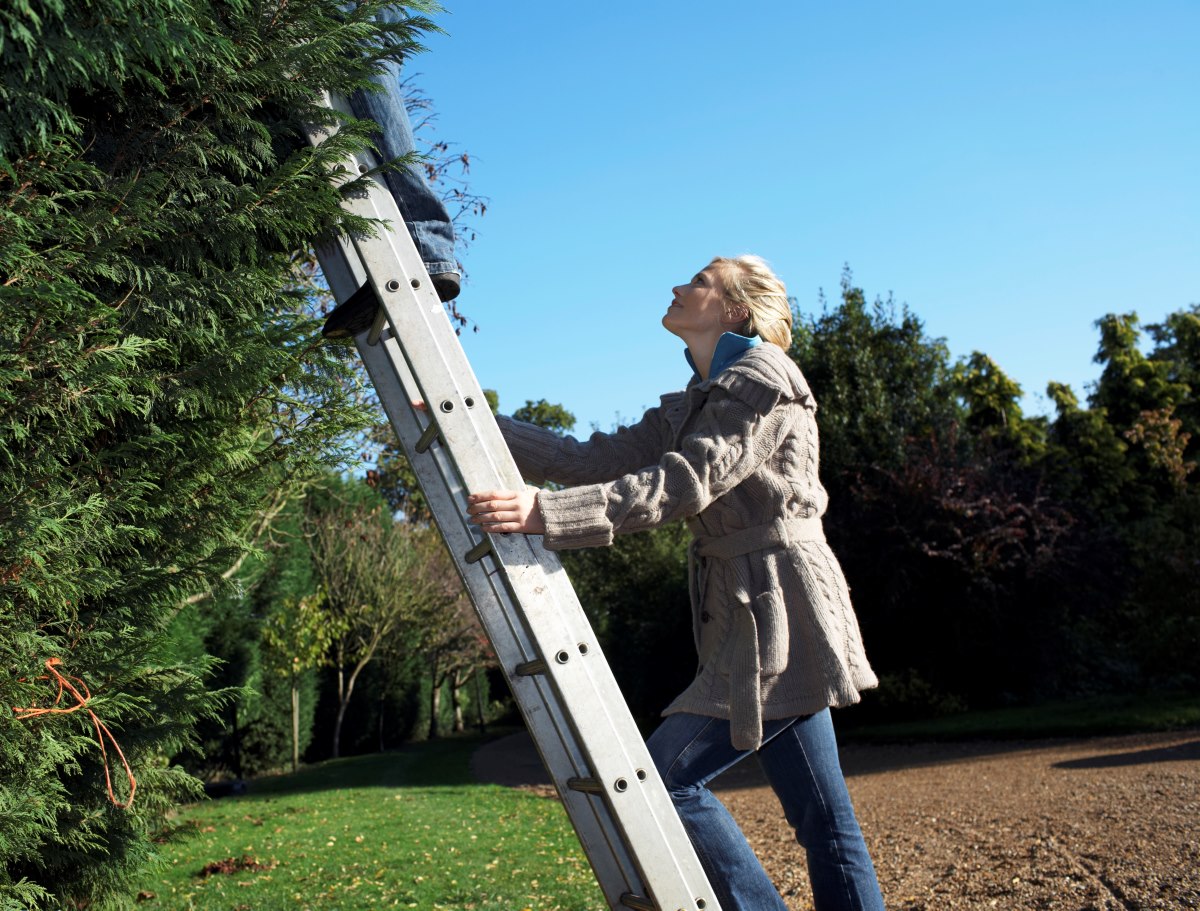


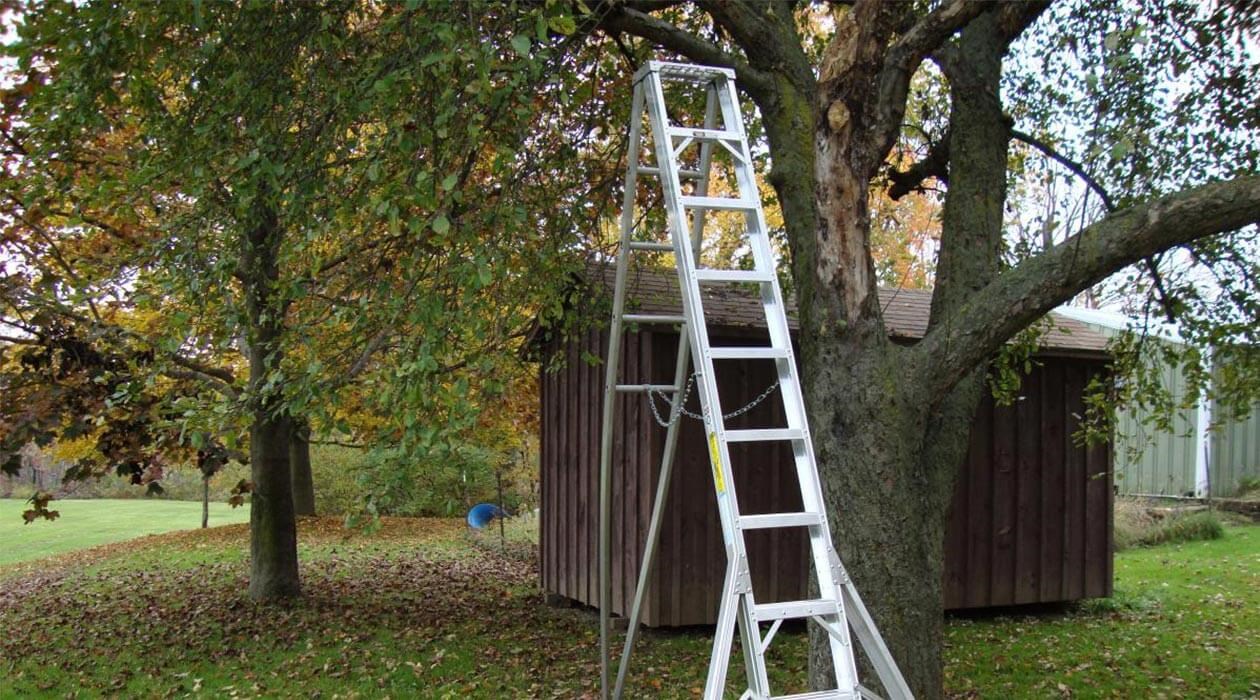

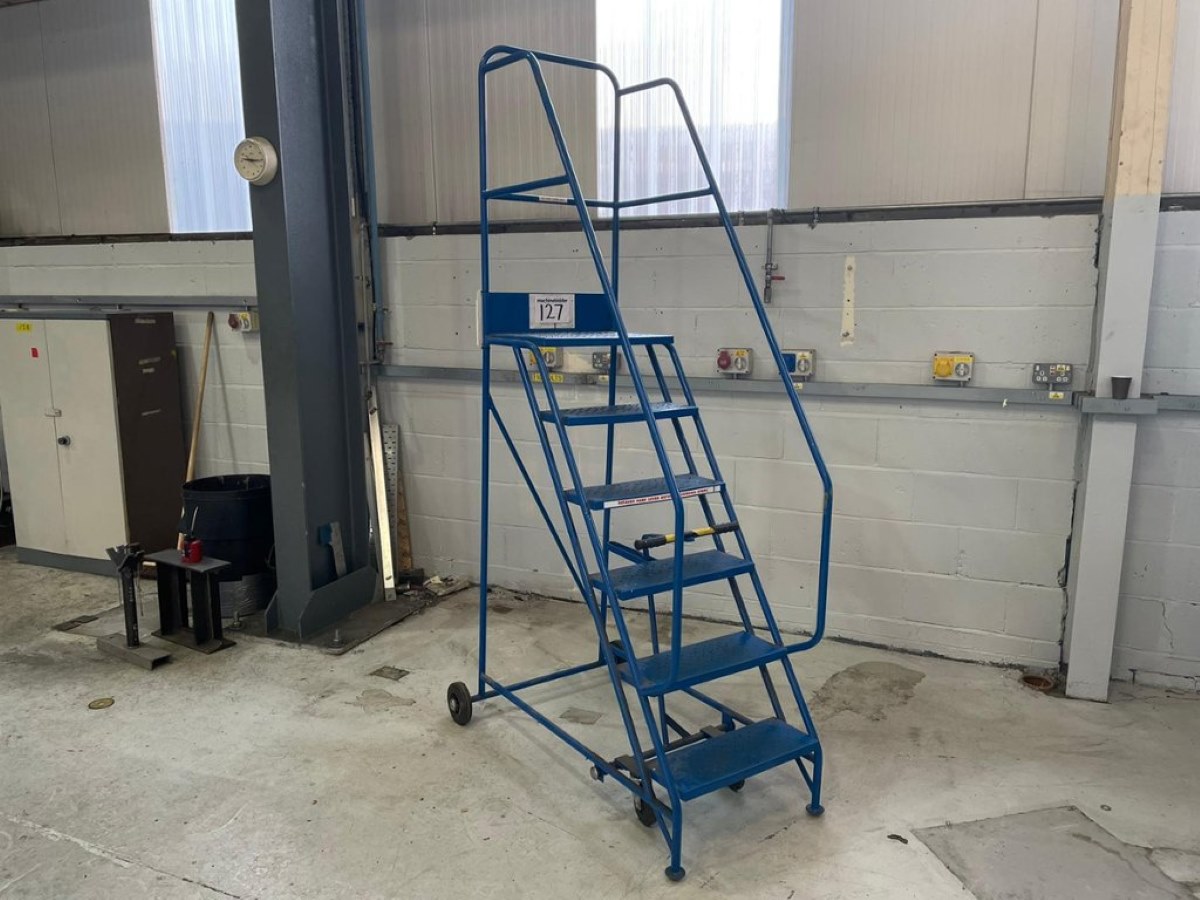

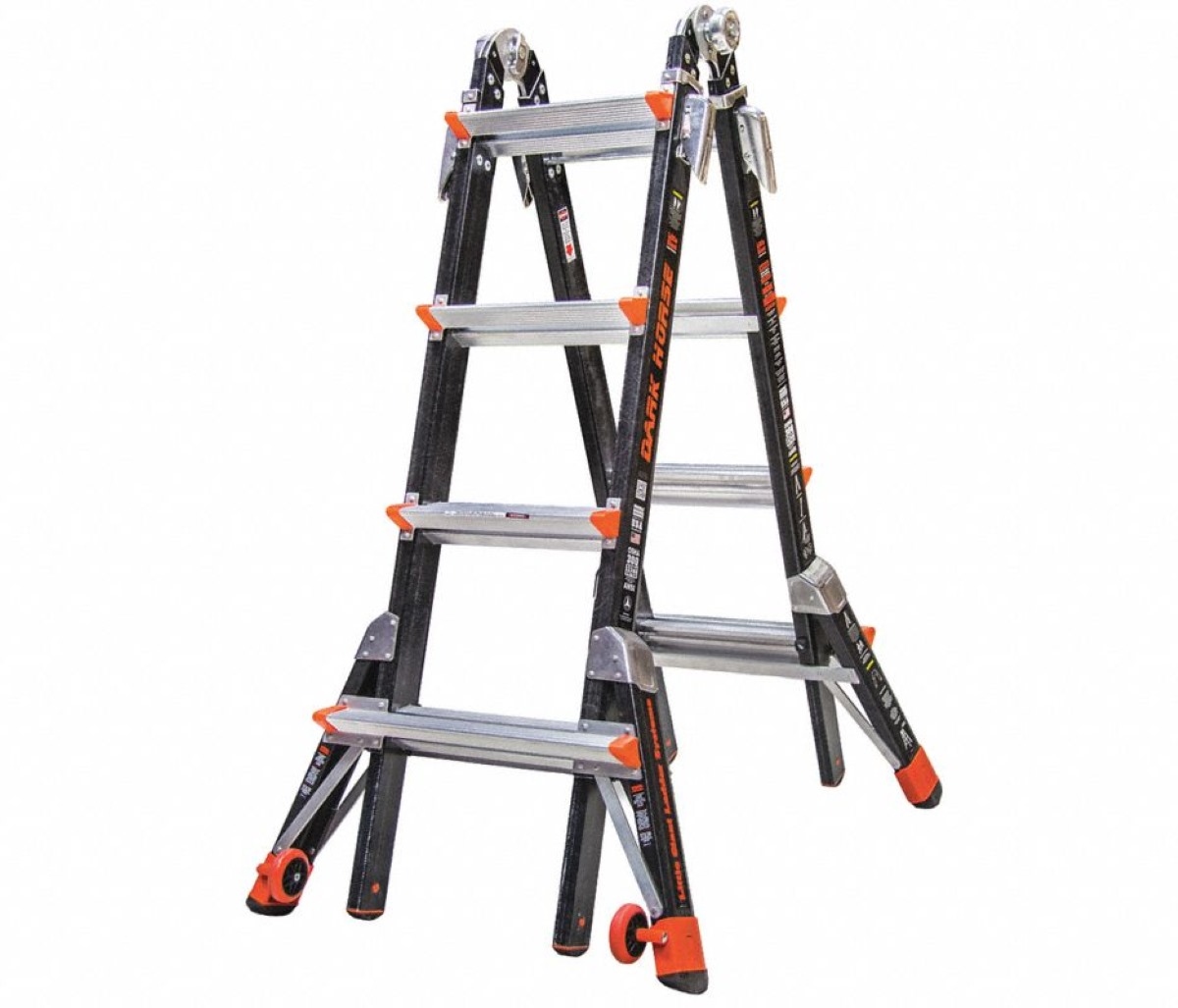
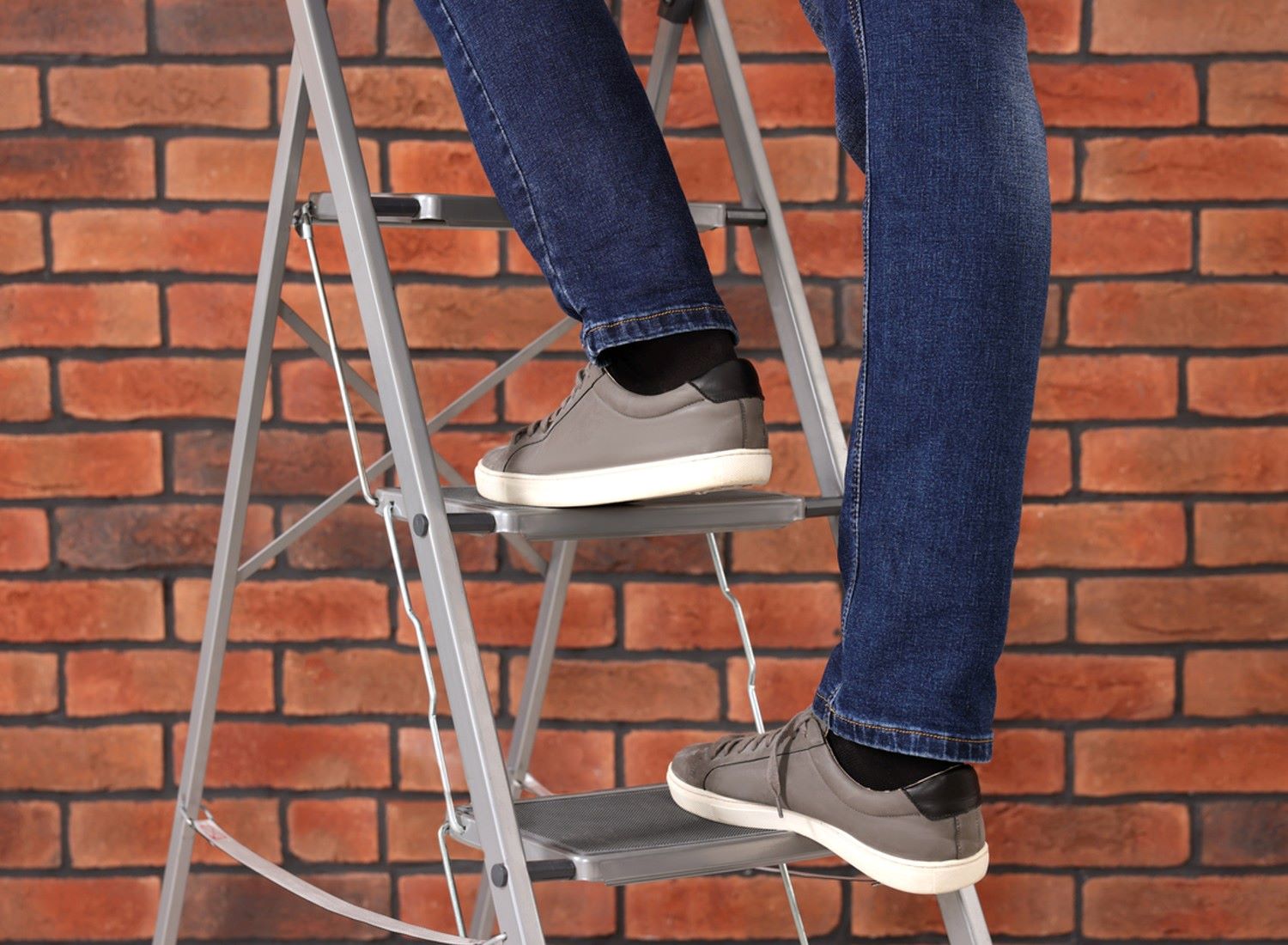

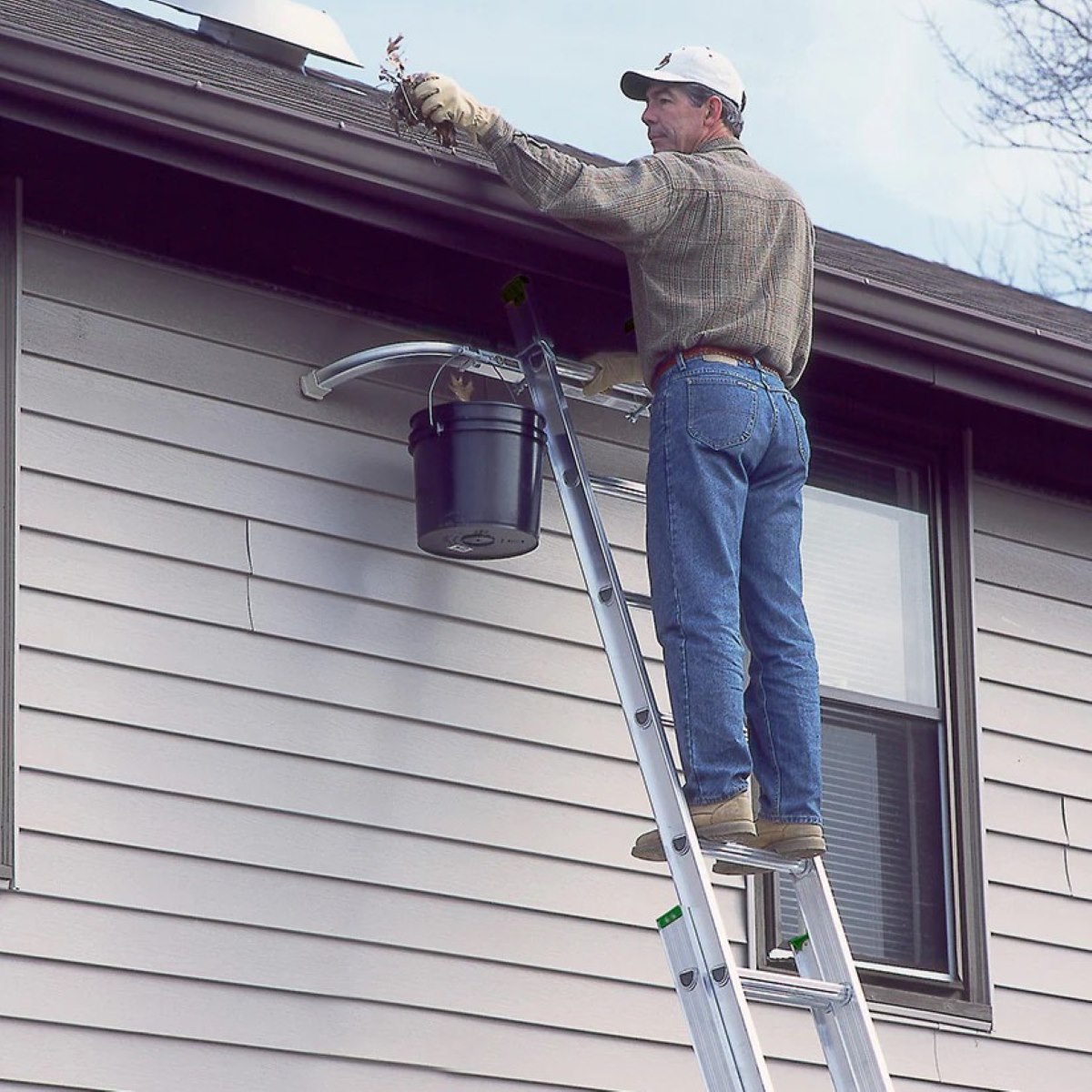
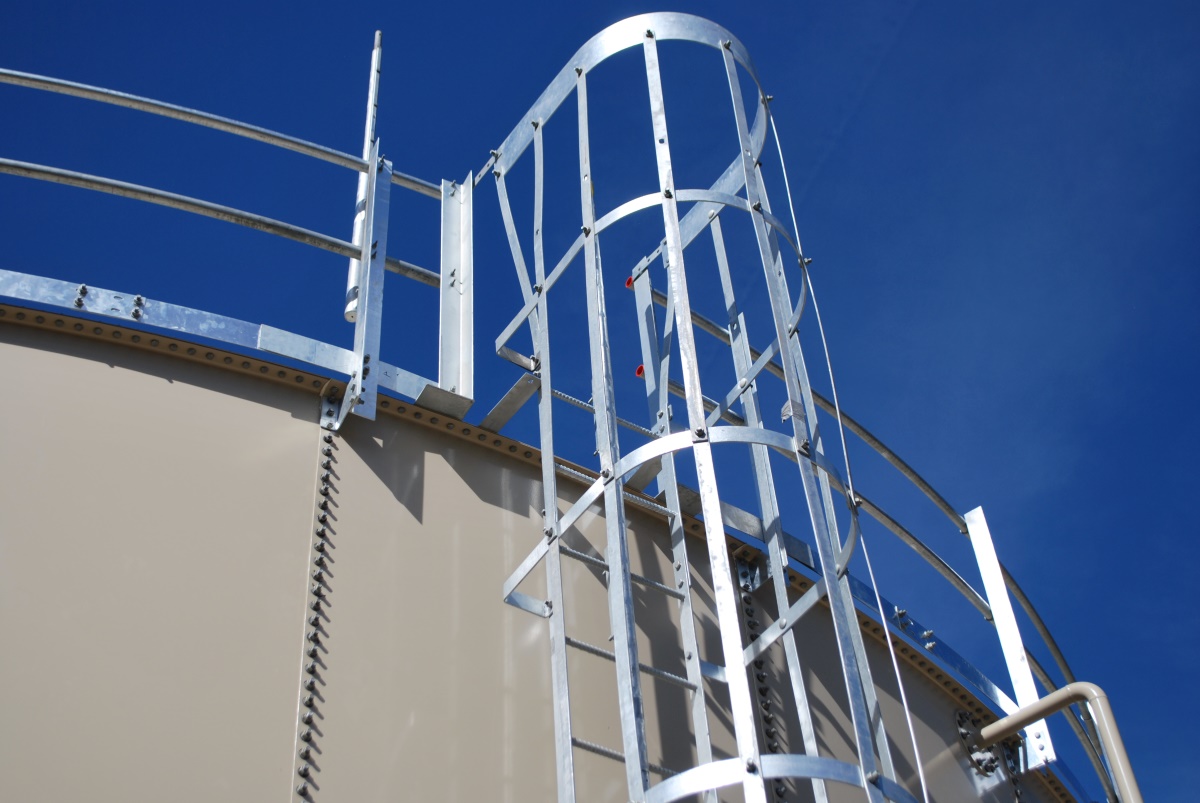

0 thoughts on “What Are The Potential Safety Hazards When Using A Ladder”